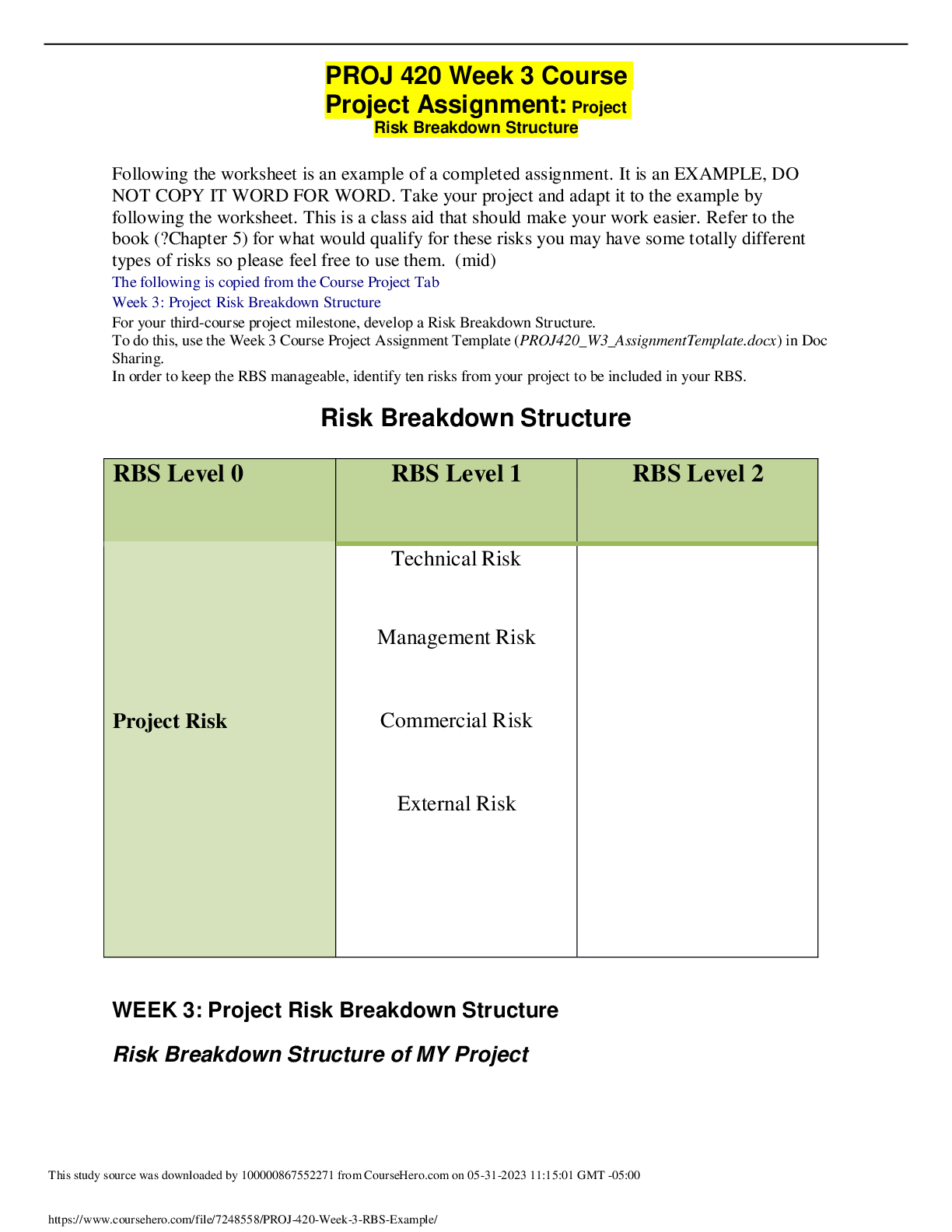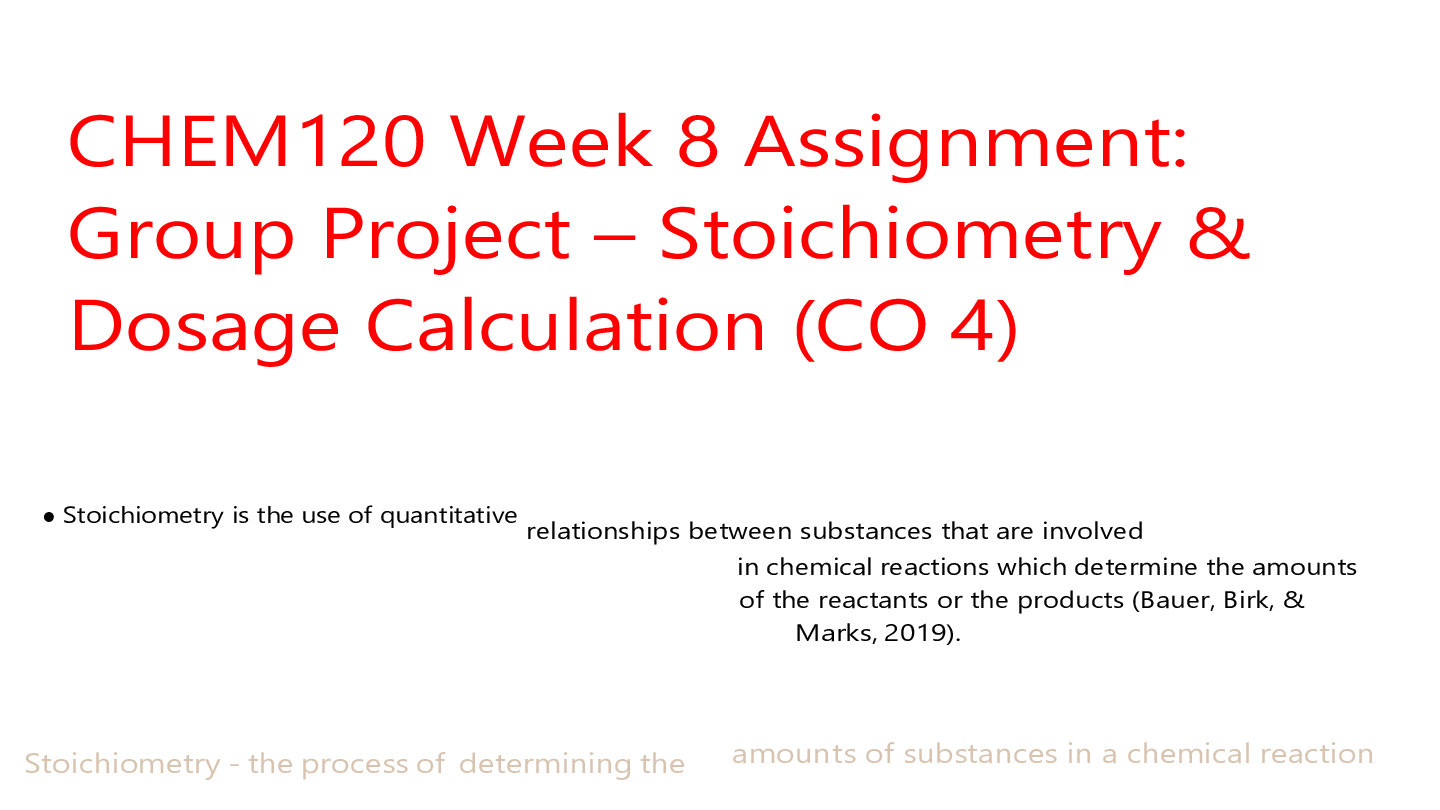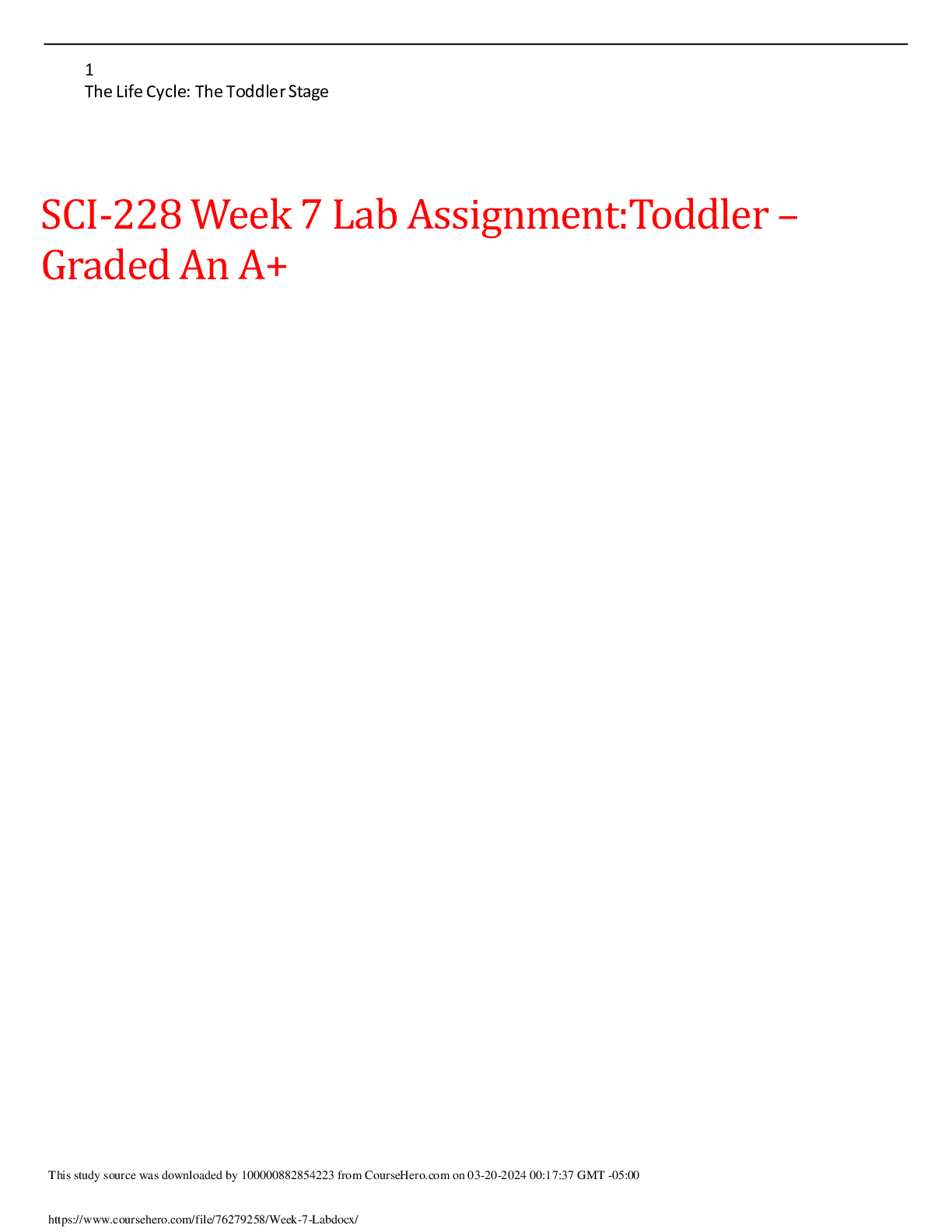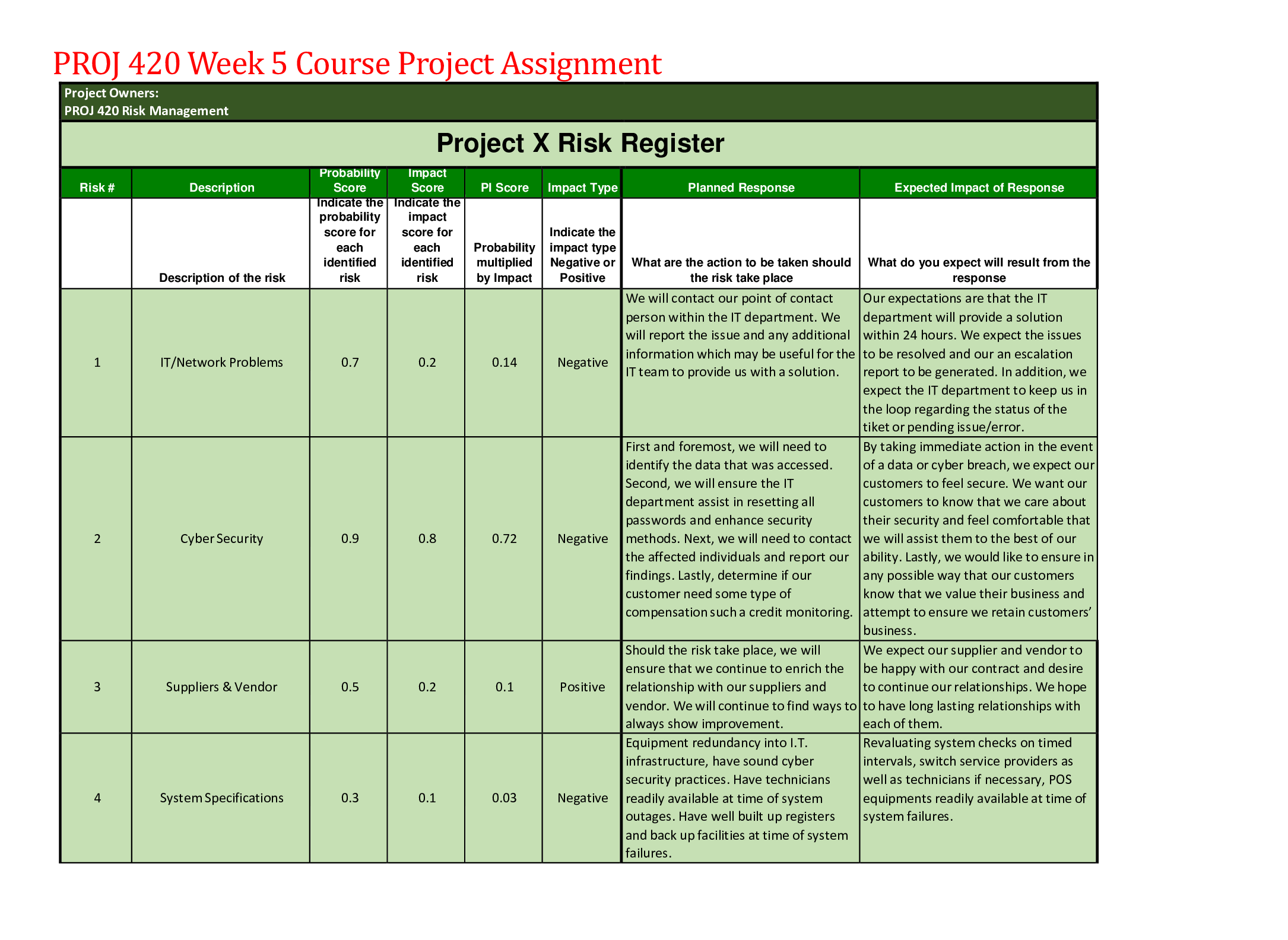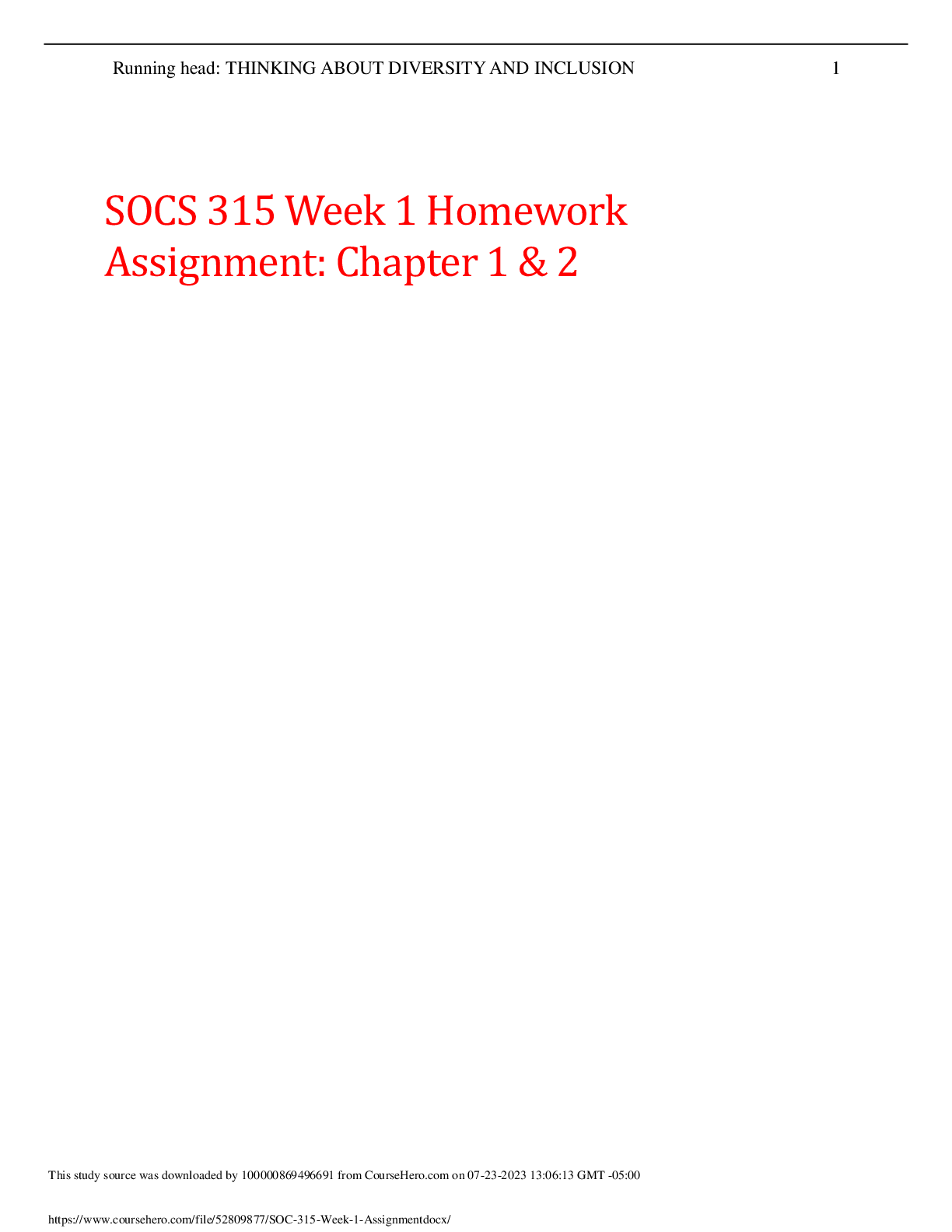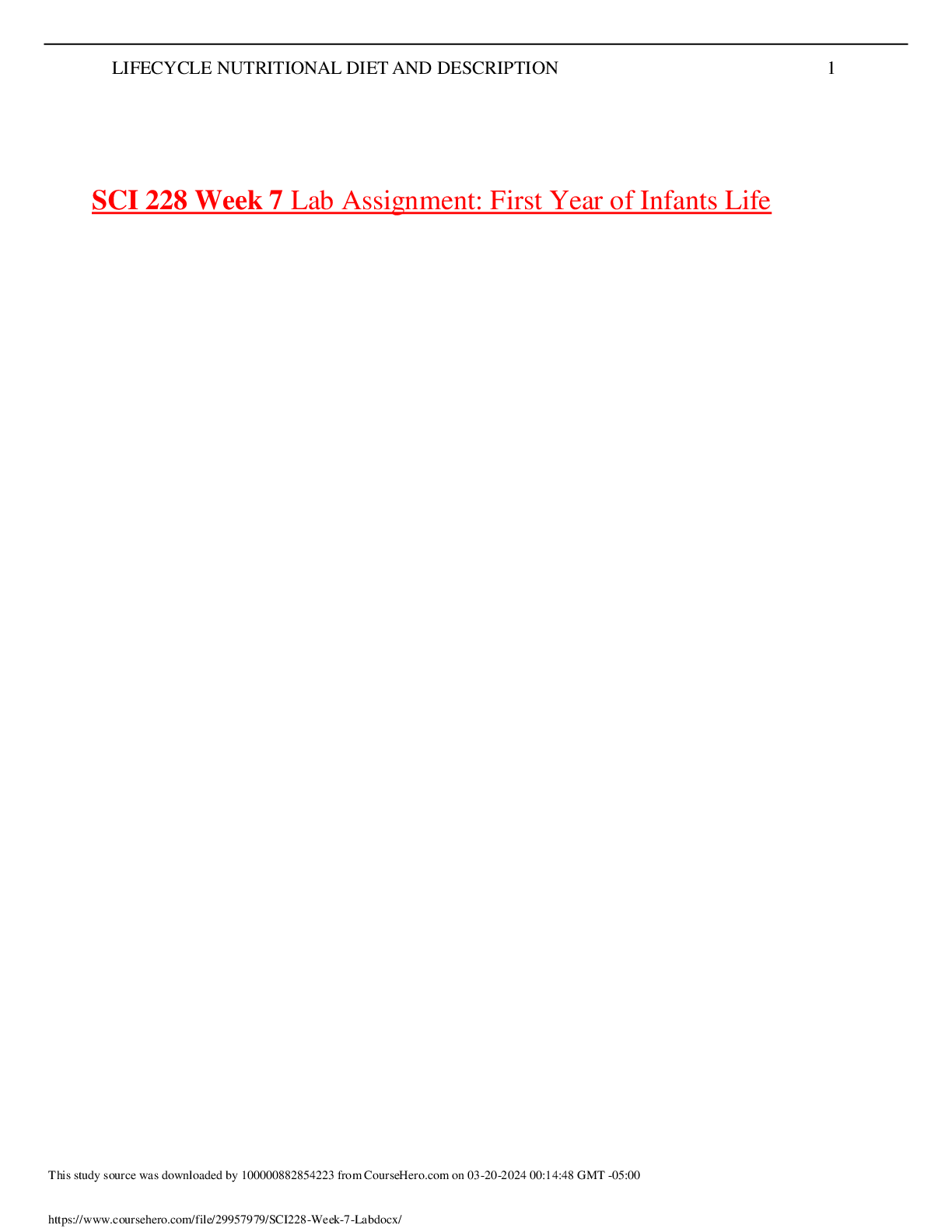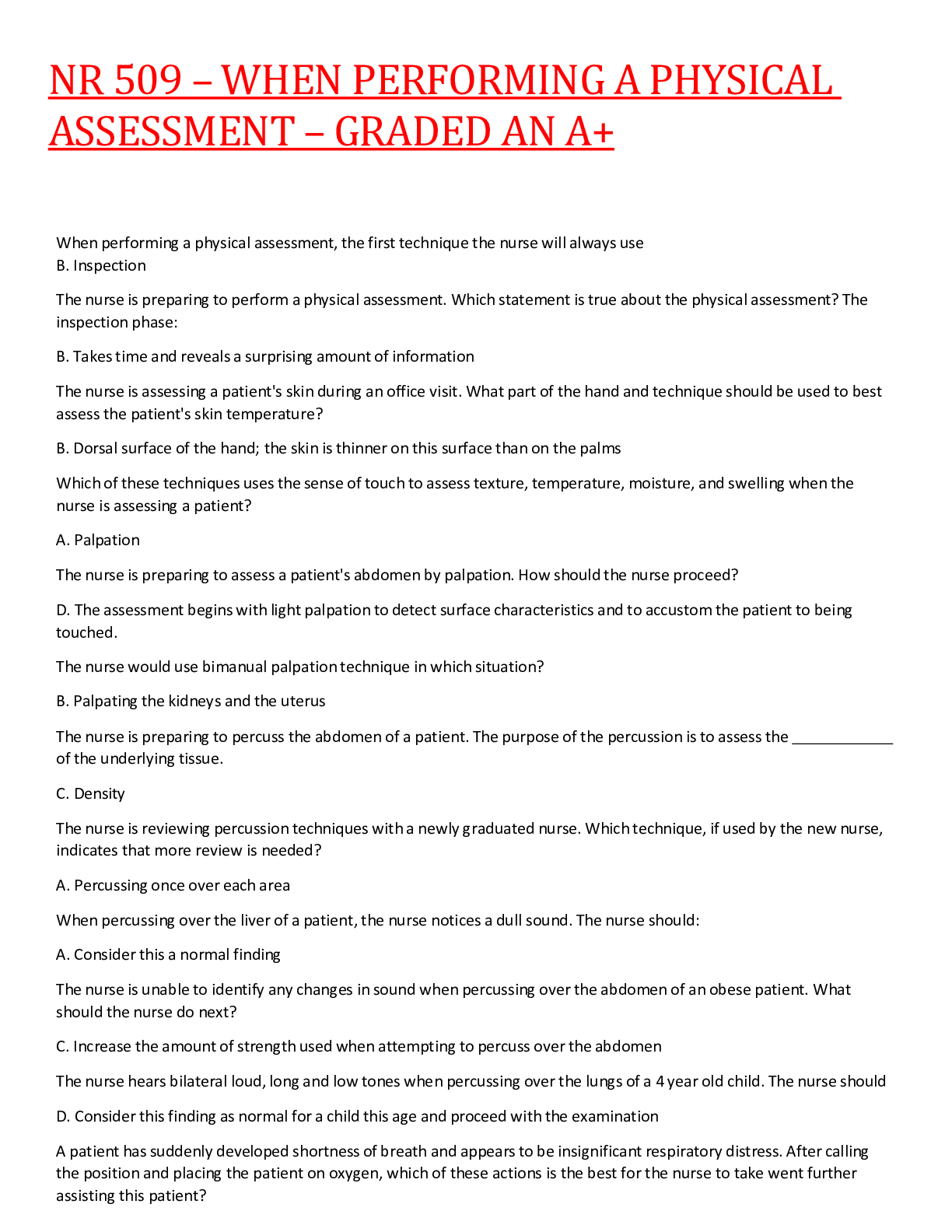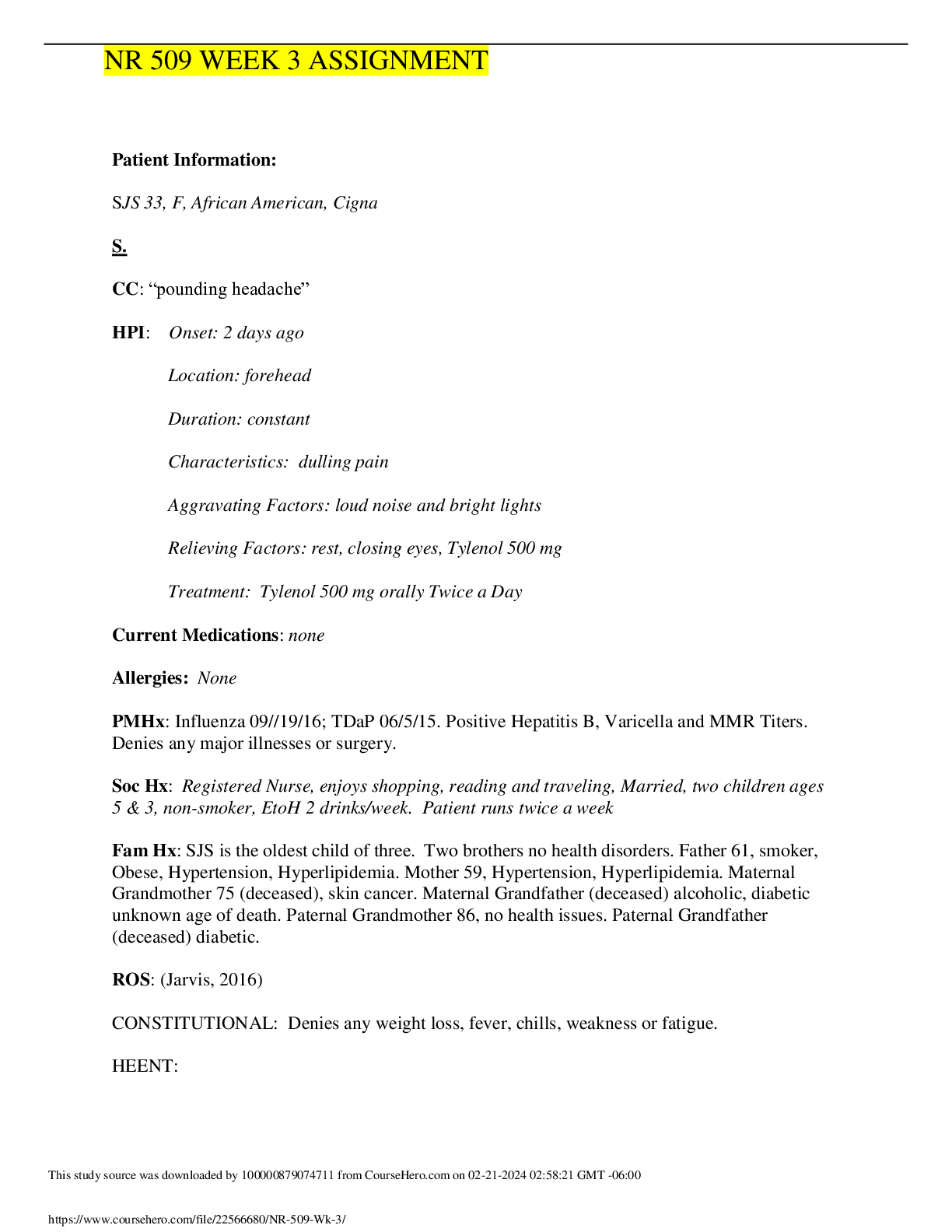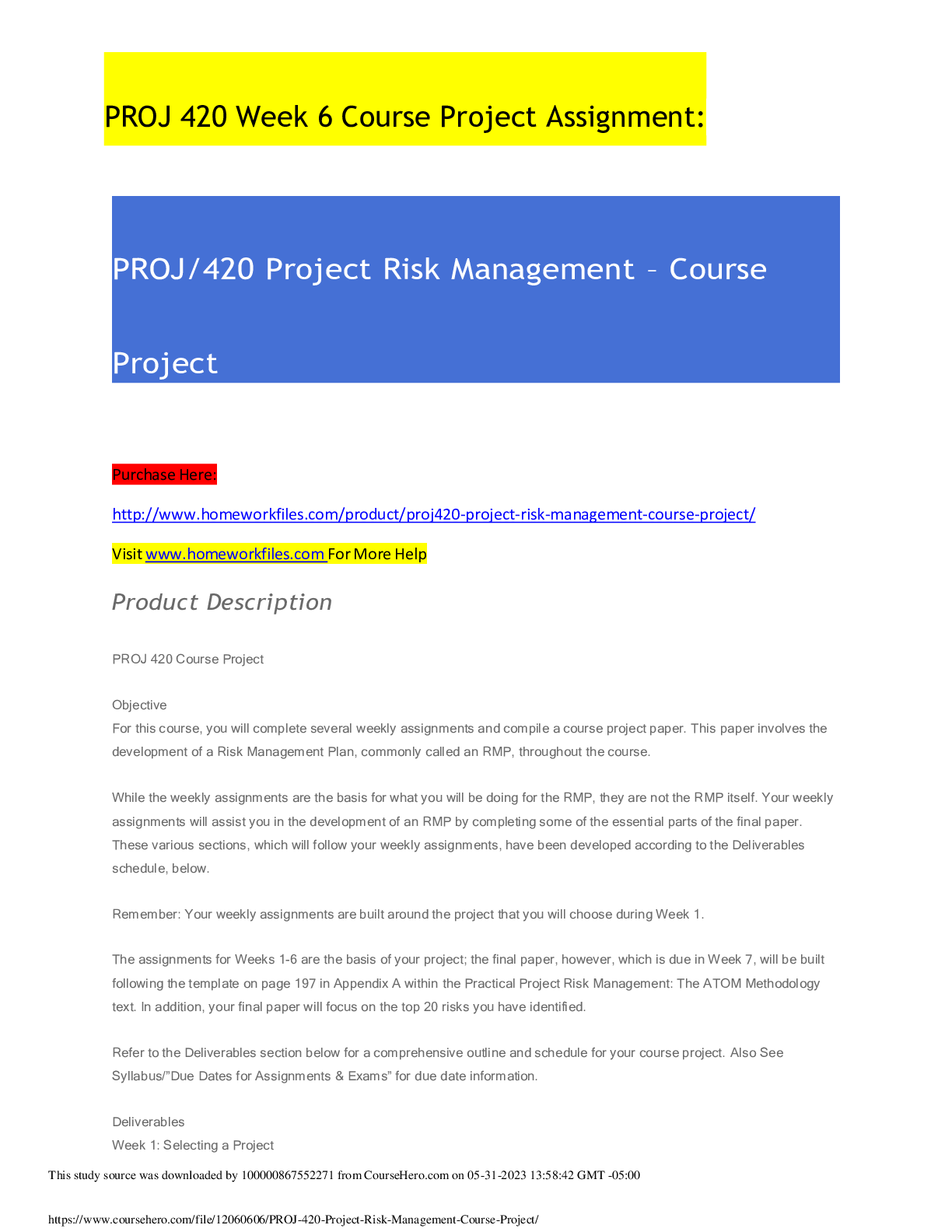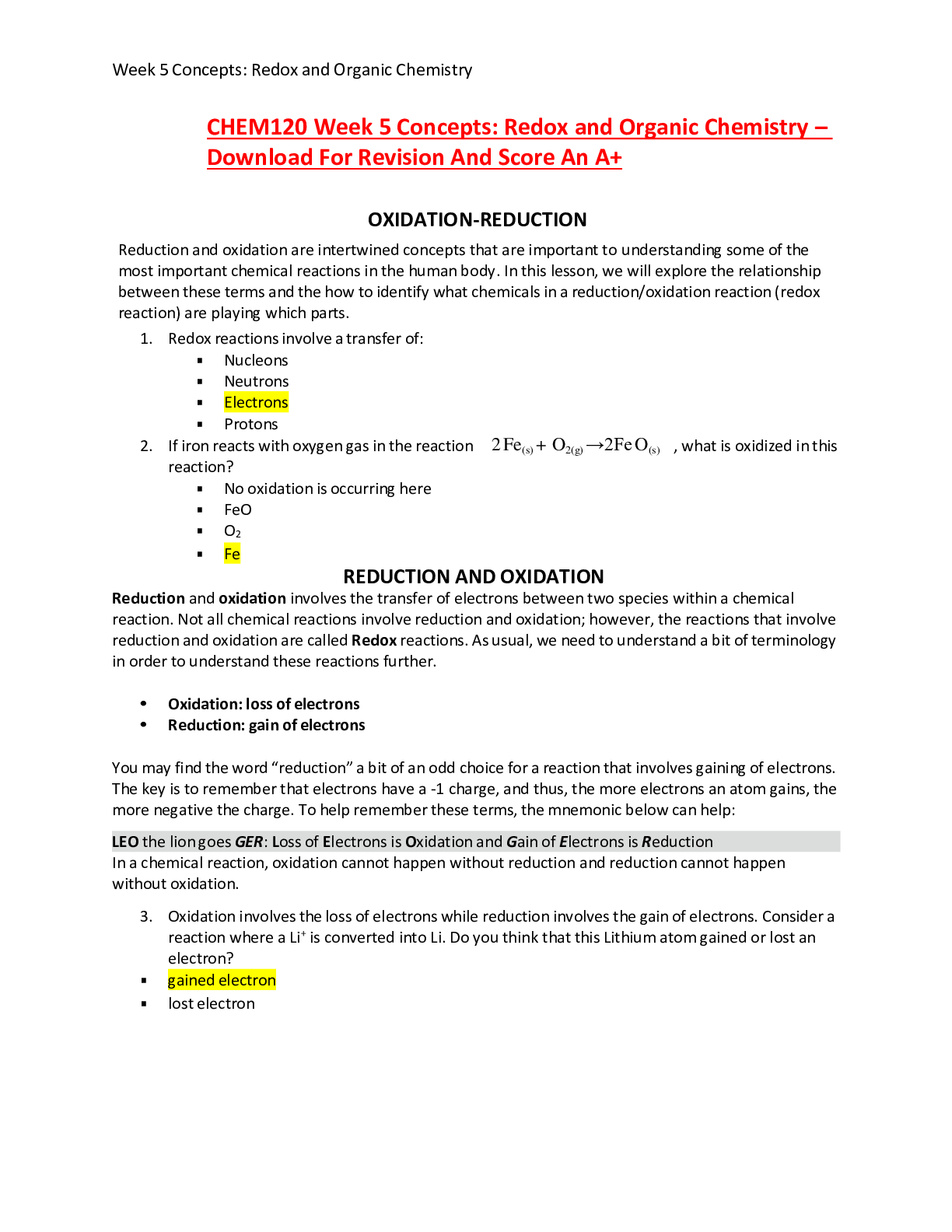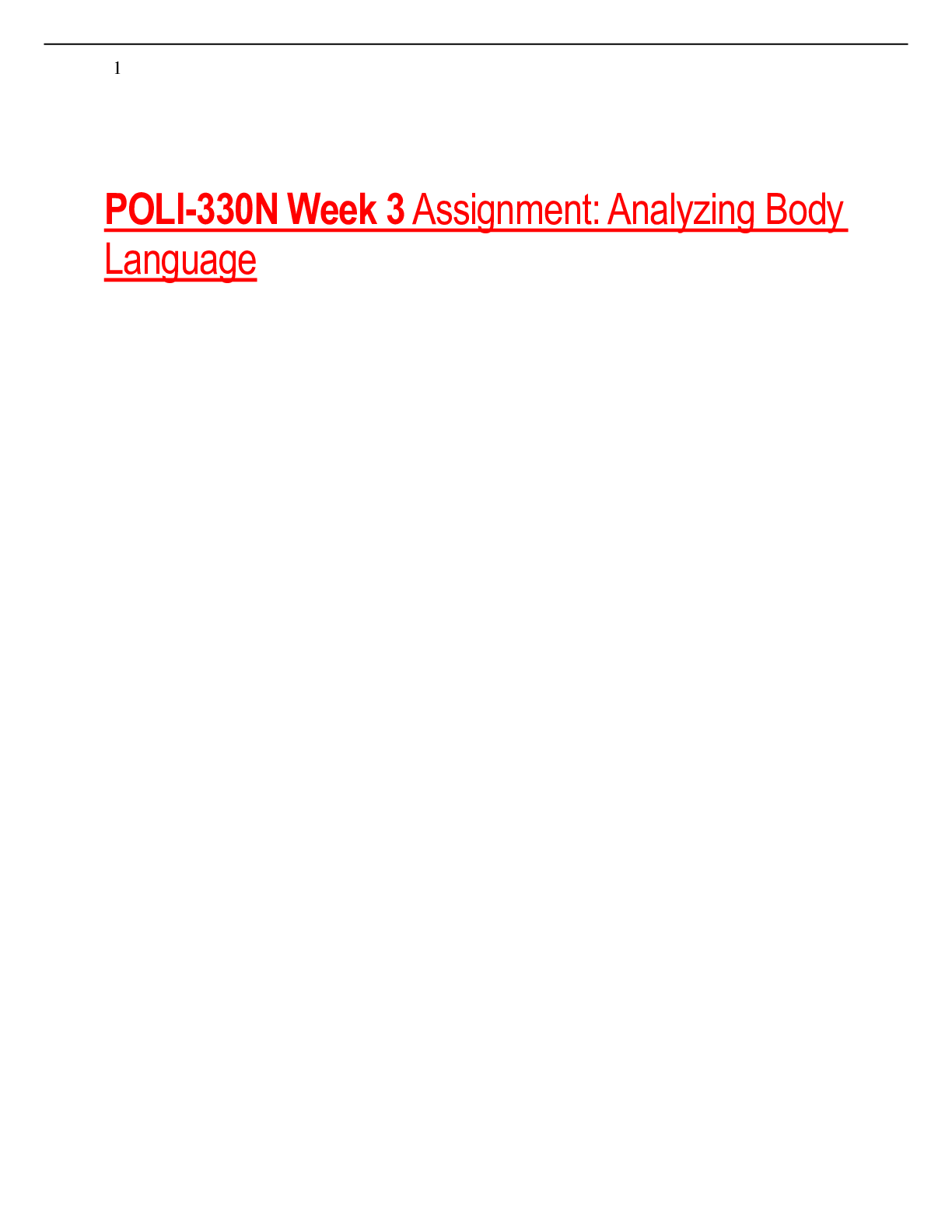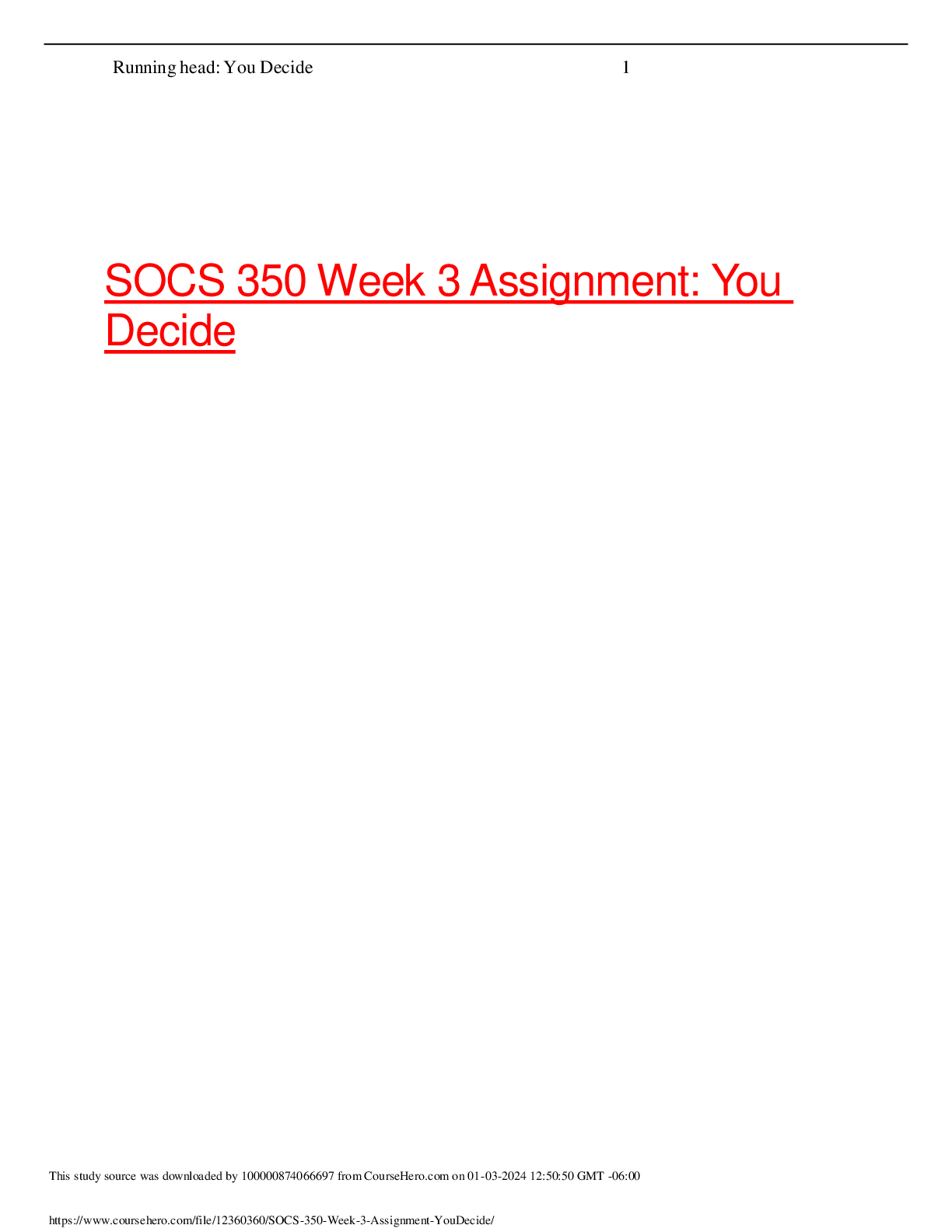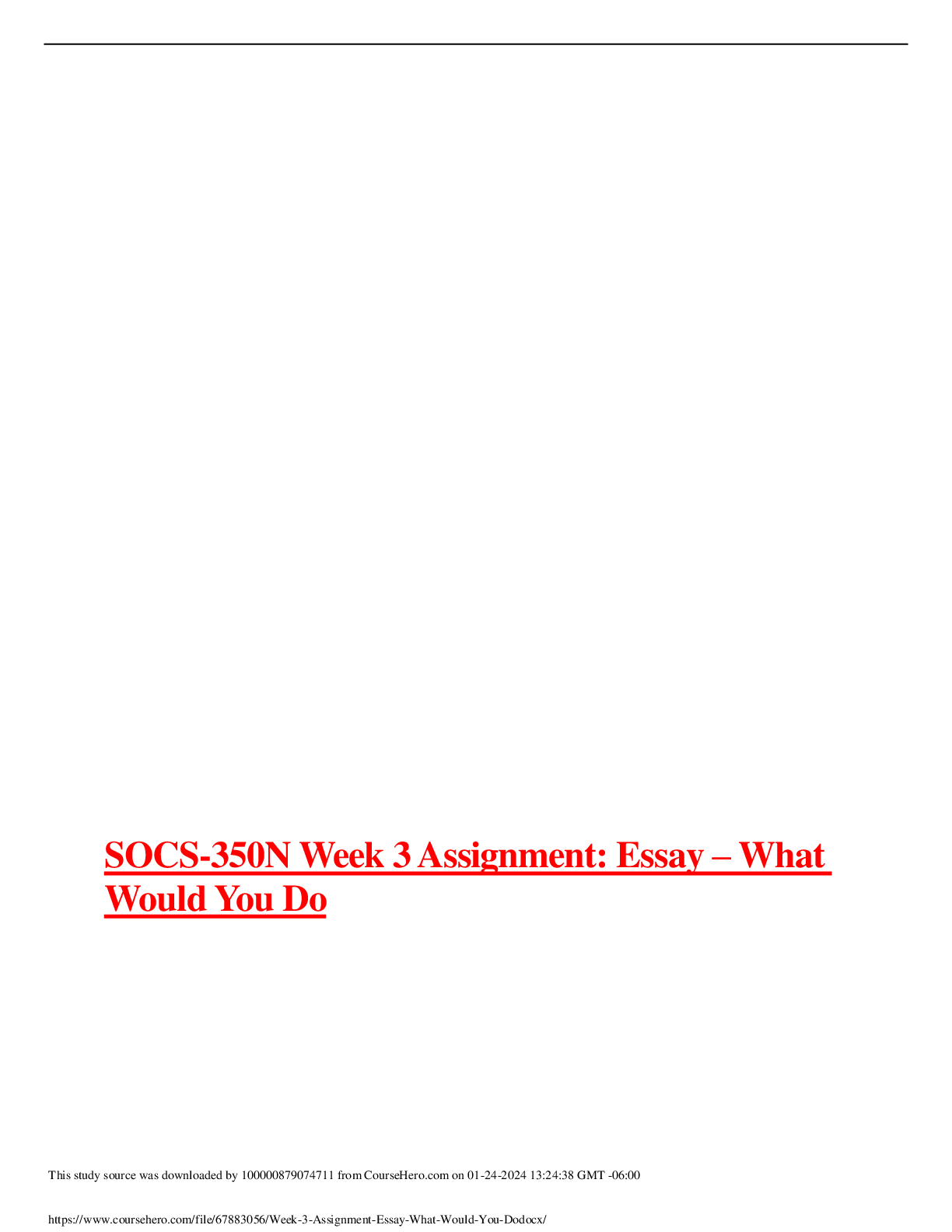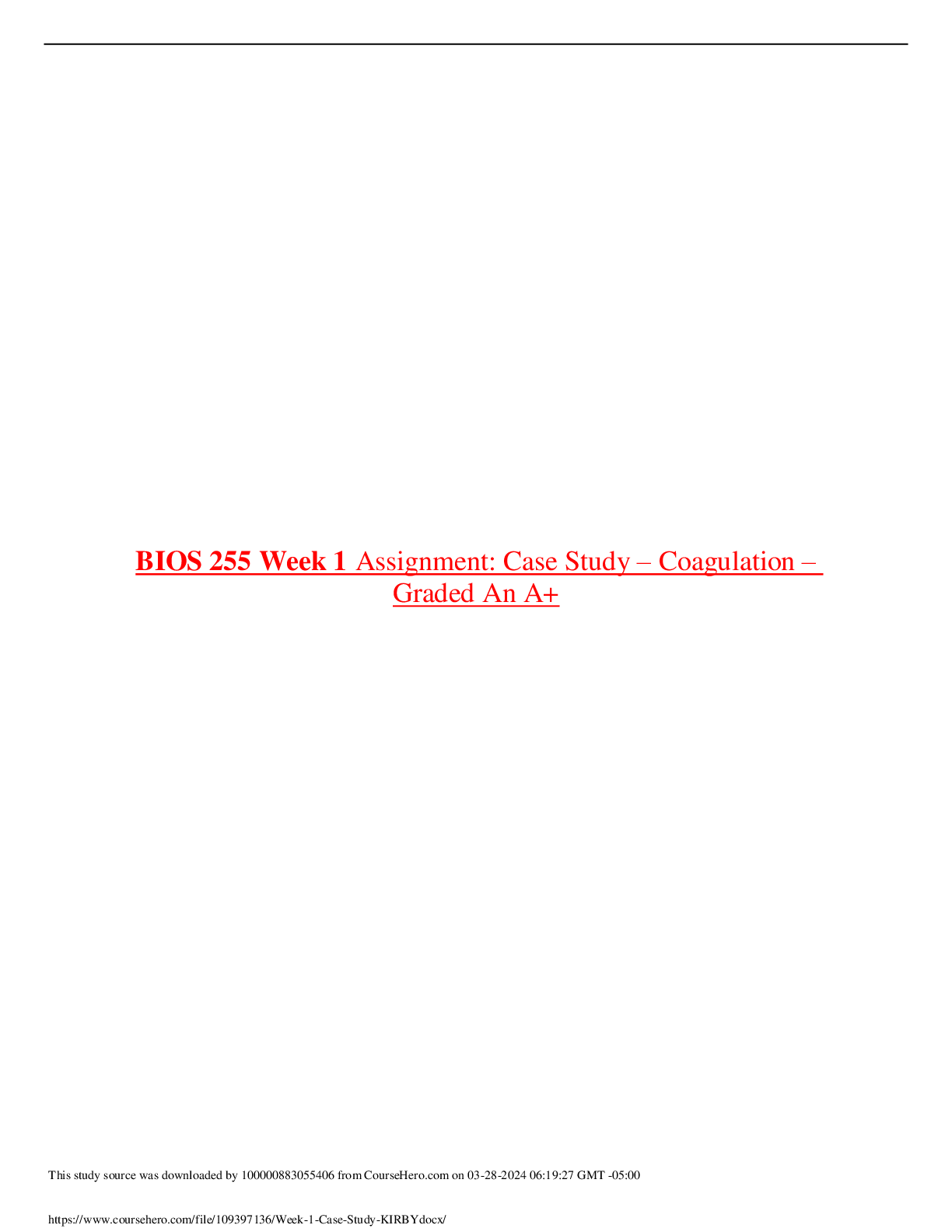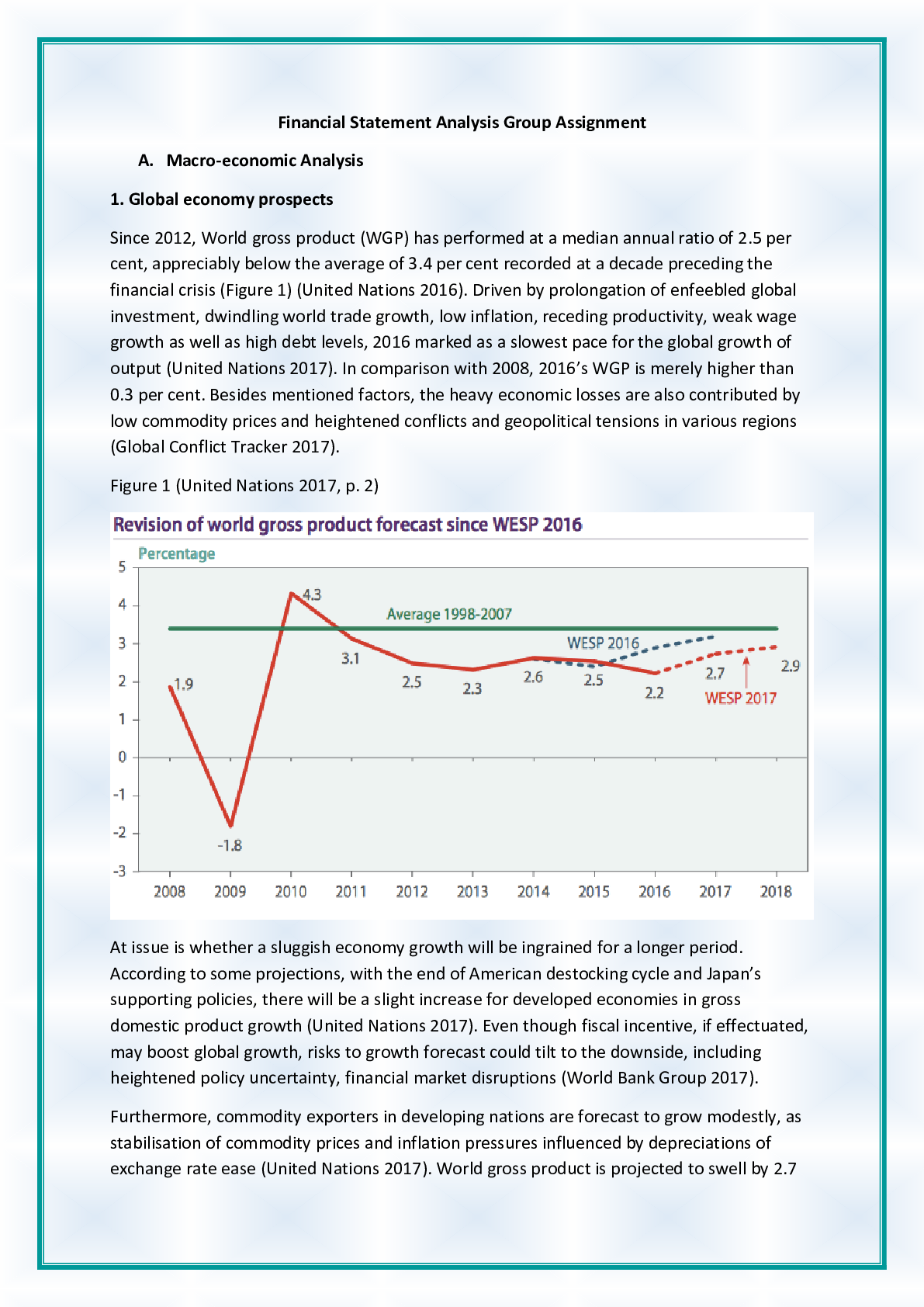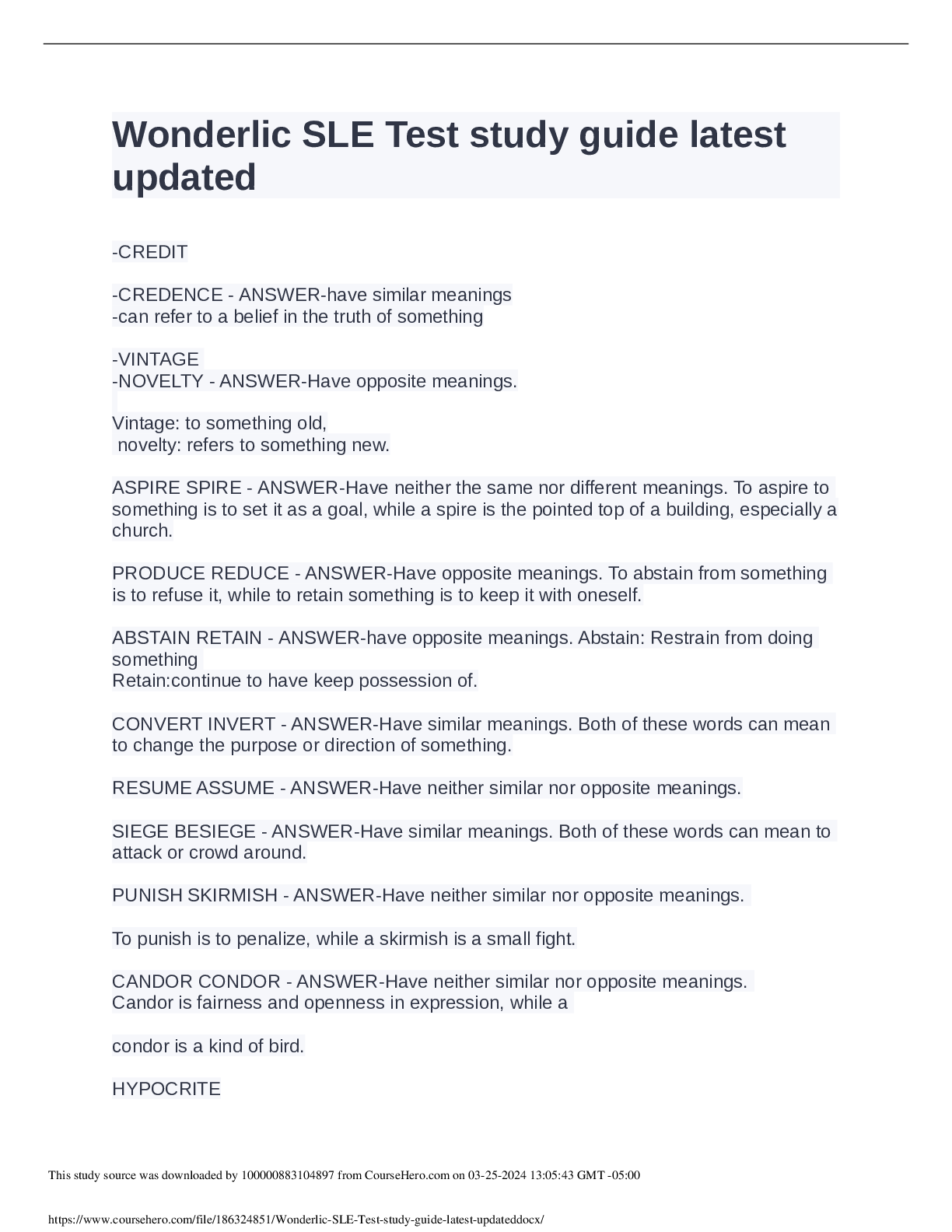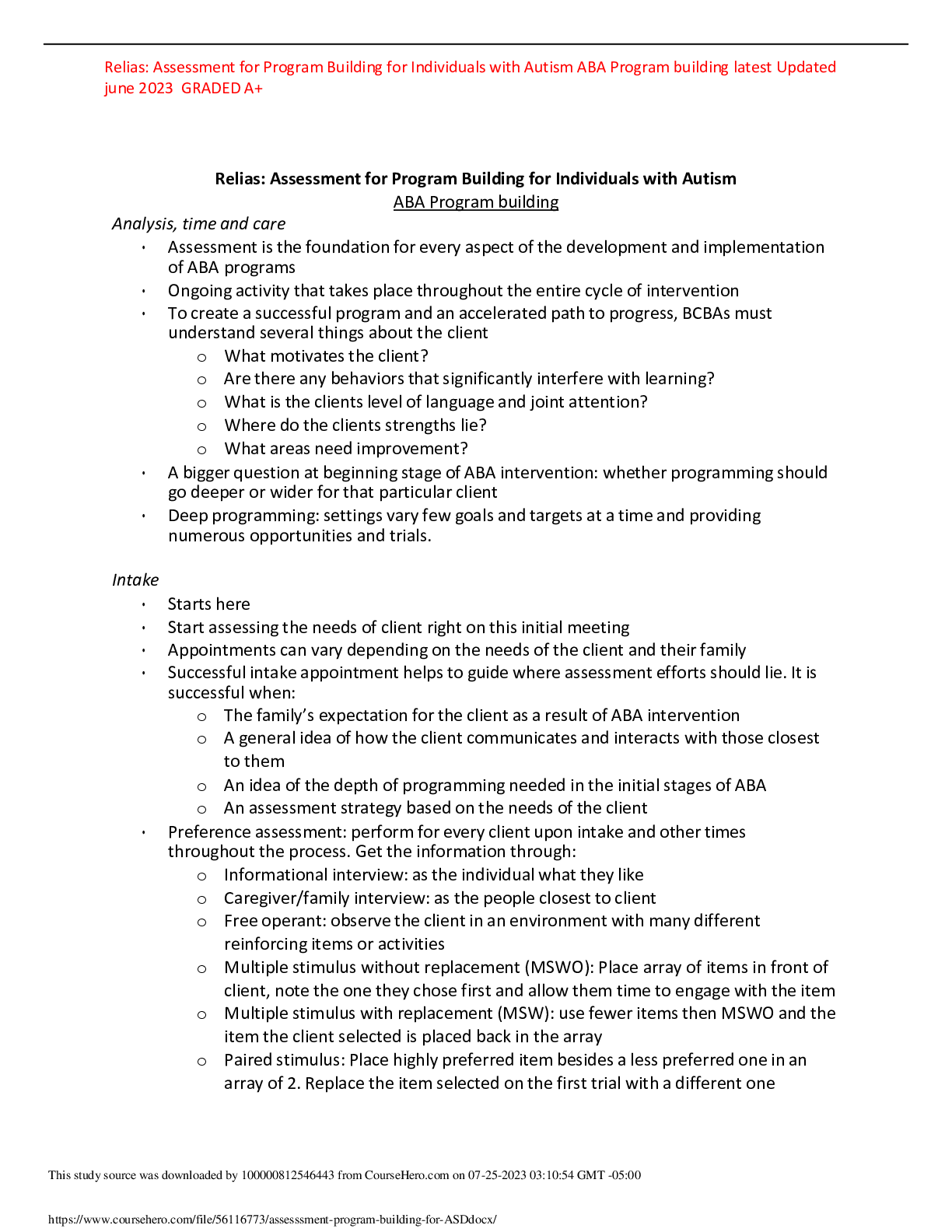*NURSING > ASSIGNMENT > BIOS 255 Week 3 Assignment: Case Study – Hypoproteinemia – Graded An A+ (All)
BIOS 255 Week 3 Assignment: Case Study – Hypoproteinemia – Graded An A+
Document Content and Description Below
Running head: WEEK 3 CASE STUDY HYPOPROTEINEMIA 1 BIOS 255 Week 3 Assignment: Case Study – Hypoproteinemia – Graded An A+ Components of Plasma As we have learne... d in lecture, plasma is a vital component that makes up our whole blood source. Plasma is a liquid serum that contains 92% water and 8% solutes (Mathew, 2021). The solutes that plasma contains delegates its true importance to the composition and function of blood in our bodies. A key component of plasma is it’s abundant source of proteins. The most abundant solute found in plasma is albumin. Albumin makes up about 60% of the plasma proteins and will function as a transport protein to deliver nutrients, vitamins and enzymes throughout the bloodstream (Moman, 2021). Albumin will work along with another plasma protein known as globulin. Globulin usually makes up about 35% of plasma protein and functions in blood clotting, liver processes and acute immunity (Medline Plus, 2020). The other 25% of the proteins contributing to plasma will include fibrinogens. Fibrinogens are proteins that work as a key clotting factor in the coagulation process. In plasma, fibrinogen is mentioned as a coagulant that usually takes up about 7%. The third component of plasma is electrolytes. The electrolytes in plasma are important for ensuring the proper pH of blood. Electrolytes found in blood include: sodium, bicarbonate, chlorine and calcium. In total, these electrolytes may be found at a relatively lower level than its constituents percentage wise yet still have a key role in being a marker of hydration and potassium levels within the body. The final component of plasma are the immunoglobulins. Immunoglobulins serve as an immune function within the plasma to fight infection and create memory in the form of antibodies. IgG will constitute about 75% of the plasma immunoglobulins while the other four will make up about 25% (Scripps, 2010). Protein Production in the Liver In the body, the liver will use vitamin K to produce proteins. The proteins produced in the liver include albumin which serves as a transport protein within the blood (Wilson, 2020). Ferritin is another protein produced by the liver that will store up iron in the blood. As we learned, without iron the body can not perform hemostasis from myeloid stem cells (Saladin et al., 2021). The liver will also make lipoproteins which aid in cholesterol synthesis. Cholesterol synthesis will allow for hormones to be made that signal metabolic processes. The last type of proteins that are produced in the liver are acute-phase proteins that function in inflammation and infection. Acute phase proteins produced in the liver include haptoglobin, C-reactive protein and serum amyloid A (Jain et al., 2011). Regulation of Capillaries by Albumin Since albumin is so abundant in the plasma, it is necessary in maintaining the oncotic pressure of the capillaries. Albumin is a transport protein that will regulate the flow of nutrients, vitamins and enzymes within the bloodstream. As we know with osmosis, where solute goes, solvents will follow. This mechanism is used in a sense to regulate the pressure at which blood circulates and is moved within the capillaries. With this in mind it is also important to consider that a lack of albumin can cause swelling as the fluid will leak into interstitial spaces instead of the bloodstream (Moman, 2021). This lack of protein is also a causative agent of hypoproteinemia. Fluid Movement at the Capillary In a capillary, the arterial side undergoes filtration due to the fluid moving out of the capillary. Filtration is the way that bulk materials are able to pass through the capillary to supply nutrients to the rest of the body’s arteries. The arterial side is also under the influence of filtration because it has a pressure being exerted by the blood hitting the wall of the cells. This pressure is known to be called the capillary hydrostatic pressure. On the venous side, the capillary is influenced by diffusion. Diffusion will drive the movement of fluid back into the capillary due to the low capillary hydrostatic pressure and the high blood colloidal osmotic pressure (Lumen Learning, 2008). This pressure is measured by the concentration of proteins in the blood that also drive the reabsorption of water. Betty’s Solution The outcome of Betty’s diagnosis was hypoproteinemia. In her case, I believe that she should try to consume more foods that are high in protein such as red meats, fish, eggs, tofu, nuts and dairy. I would also recommend that Betty eat 6 grams of protein for every 10lbs that she weighs in order to ensure an adequate intake. Lastly, I would advise Betty to meet with a dietician to figure out some foods that will fit for her diet and boost her levels of protein. Increasing protein in her daily intake will ensure that she can become healthier and have more protein be absorbed into her bloodstream (Watson, 2018). References Jain, S., Gautam, V., & Naseem, S. (2011, January). Acute-phase proteins: As diagnostic tool. Journal of pharmacy & bioallied sciences. Retrieved September 18, 2021, from https://www.ncbi.nlm.nih.gov/pmc/articles/PMC3053509/. Lumen Learning. (2008). Anatomy and physiology II. Capillary Exchange | Anatomy and Physiology II. Retrieved September 18, 2021, from https://courses.lumenlearning.com/suny-ap2/chapter/capillary-exchange/. Mathew, J. (2021, April 28). Physiology, blood plasma. StatPearls [Internet]. Retrieved September 18, 2021, from https://www.ncbi.nlm.nih.gov/books/NBK531504/. Medline Plus. (2020, July 31). Globulin test: MedlinePlus Medical Test. MedlinePlus. Retrieved September 18, 2021, from https://medlineplus.gov/lab-tests/globulin- test/#:~:text=Globulins%20are%20a%20group%20of,blood%20clotting%2C%20and %20fighting%20infection. Moman, R. N. (2021, August 9). Physiology, Albumin. StatPearls [Internet]. Retrieved September 18, 2021, from https://www.ncbi.nlm.nih.gov/books/NBK459198/. Saladin, K. S., Gan, C. A., & Cushman, H. N. (2021). Anatomy & Physiology: The unity of form and function (Ninth). McGraw-Hill Education. Scripps. (2010). Human Immunoglobulins. Plasma Proteins. Retrieved September 18, 2021, from https://scrippslabs.com/immunoglobulins-human/. Watson, S. (2018, September 18). Hypoproteinemia: Definition, causes, and symptoms. Healthline. Retrieved September 18, 2021, from https://www.healthline.com/health/hypoproteinemia#takeaway. Wilson. (2020, March 25). The liver - an amazing organ. Gastrointestinal Society. Retrieved September 18, 2021, from https://badgut.org/information-centre/a-z-digestive- topics/the-liver-an-amazing-organ/. [Show More]
Last updated: 1 month ago
Preview 1 out of 6 pages
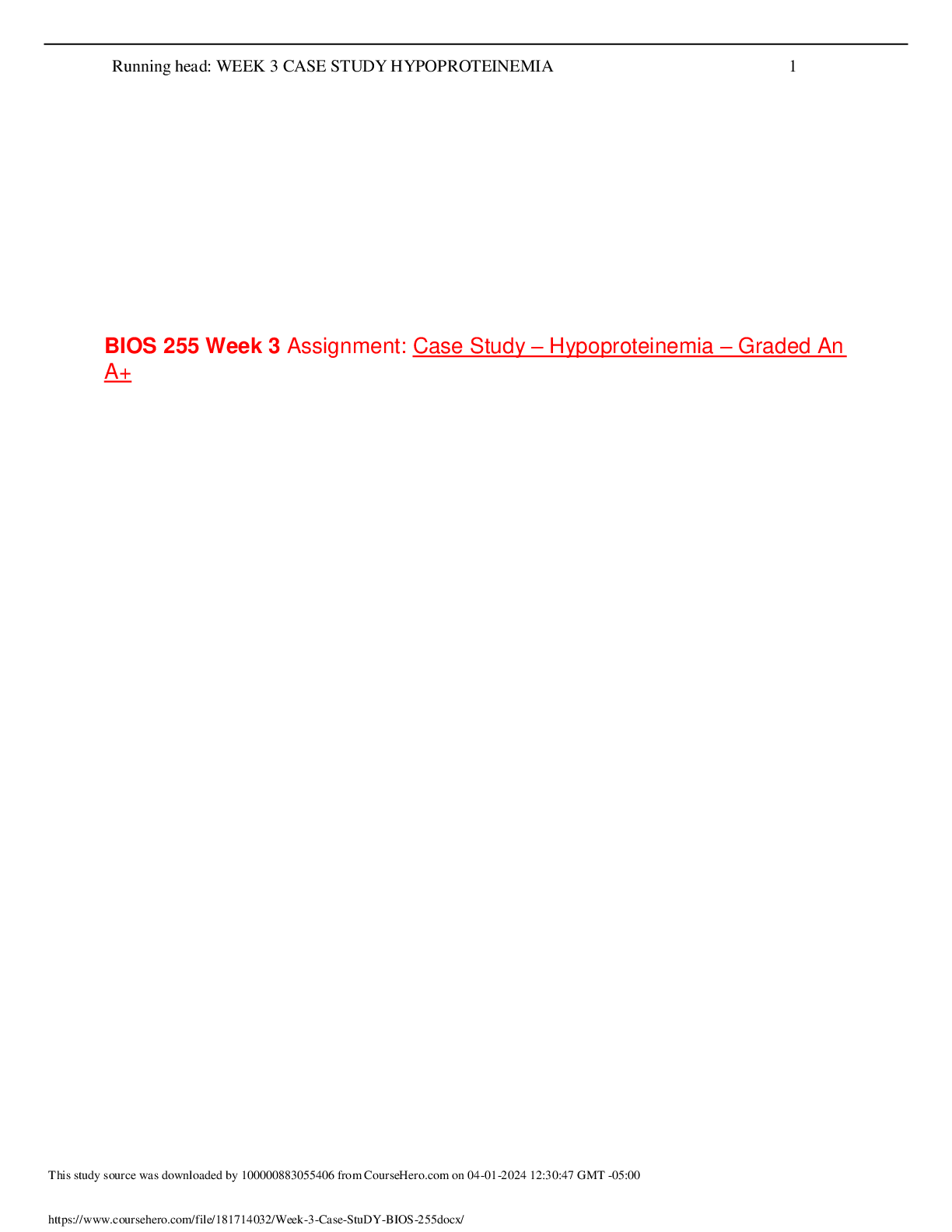
Reviews( 0 )
Document information
Connected school, study & course
About the document
Uploaded On
Apr 01, 2024
Number of pages
6
Written in
Additional information
This document has been written for:
Uploaded
Apr 01, 2024
Downloads
0
Views
19

